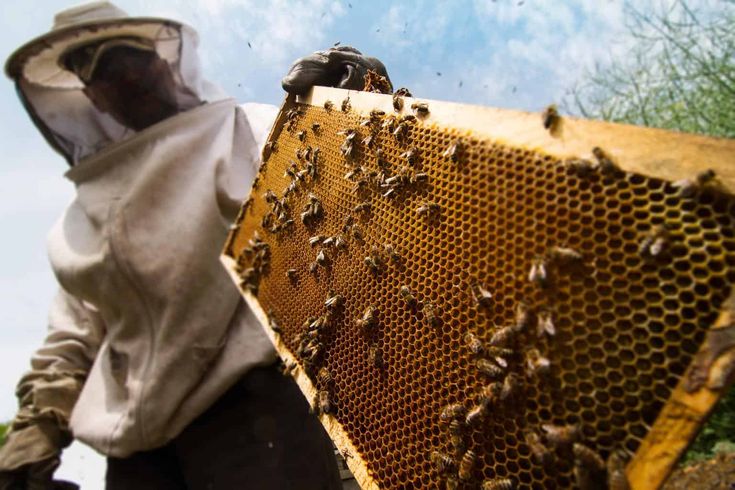Beekeeping for Self-Sufficiency: A Guide to Homesteading with Bees
Introduction:
In recent years, there has been a growing interest in self-sufficiency and homesteading. Many people are turning to beekeeping as an essential component of their self-sufficient lifestyle. Not only does it provide honey, but it also offers numerous other benefits such as pollination, beeswax production, and even the possibility of selling surplus products. If you’re considering beekeeping for self-sufficiency, this guide will walk you through the essentials.
Getting Started:
Before diving into beekeeping, it’s crucial to gather knowledge about bees and their behavior. Research various species of bees and choose the one that best suits your climate and objectives. Honeybees are a popular choice due to their gentle nature, high honey production, and excellent pollination abilities.
Next, find a suitable location on your property for the beehive(s). Bees need access to water sources nearby while being protected from strong winds and excessive sunlight. Additionally, ensure there is ample space around the hive for easy accessibility during inspections.
Equipment Needed:
To begin your journey in beekeeping for self-sufficiency, several essential tools are necessary:
1. Beehives: The most common type is Langstroth hives – stackable boxes where bees build combs vertically on removable frames.
2. Frames: These hold the honeycomb foundation where bees construct their cells.
3. Smoker: Used to calm bees during hive inspections by puffing cool smoke.
4. Bee suit: Protects you from stings while working with the hive.
5. Hive tool: A multipurpose tool used for prying open hives or separating frames.
6. Bee brush: Helps gently remove bees from frames without harming them.
Acquiring Bees:
There are three primary ways to acquire a colony of bees – buying packaged bees or nucleus colonies, or capturing a swarm.
1. Packaged bees: These consist of a queen bee and thousands of worker bees, packaged and ready for transport. They are typically available for purchase from reputable bee suppliers.
2. Nucleus colonies (nucs): Nucs are small established colonies that include a queen, workers, brood (developing bees), honeycomb frames, and food reserves. Purchasing nucs provides a head start as they already have an established workforce.
3. Swarm capture: Swarms occur when a colony divides itself to create new hives. Capturing swarms can be unpredictable but is cost-effective if you’re lucky enough to find one in your area.
Managing Beehives:
Once your hives are set up and populated with bees, regular hive inspections are essential to ensure the health and productivity of the colony. Here are some crucial management tasks:
1. Regular inspections: Conduct thorough inspections at least once every two weeks during active seasons (spring through fall). Check for signs of disease or pests like Varroa mites.
2. Feeding: Bees need ample food stores to survive winter months when nectar is scarce. Supplement their diet with sugar syrup or fondant if necessary.
3. Supering: Add additional boxes called supers as the population grows and more space is needed for honey storage.
4. Harvesting honey: Once the surplus honey has been produced, it’s time to harvest! Use proper extraction methods such as using an extractor or crush-and-strain method while ensuring minimal disturbance to the colony.
Pollination Benefits:
One significant advantage of keeping bees on your homestead is their pollination services which boost crop yield significantly.
1. Fruit trees and berries: Bees play a vital role in pollinating fruit trees such as apple, peach, cherry, and plum varieties along with berry bushes like raspberries and blackberries.
2. Vegetable gardens: Many vegetable crops, such as tomatoes, cucumbers, squash, and melons, rely on bees for successful pollination.
3. Flowers: Bees are attracted to a wide range of flowers, playing a crucial role in pollinating ornamental plants and ensuring their propagation.
Harvesting Other Bee Products:
Aside from honey production, beekeeping offers additional products that can contribute to your self-sufficiency goals.
1. Beeswax: Harvesting beeswax provides endless opportunities for creating homemade candles, lip balms, soaps, and even furniture polish.
2. Propolis: Known as “bee glue,” propolis is a sticky substance bees collect from tree buds and use to seal gaps in the hive. It has various medicinal properties and can be used in tinctures or salves.
3. Pollen: Collecting pollen can provide valuable nutritional supplements for humans or livestock.
Conclusion:
Beekeeping is an excellent way to enhance self-sufficiency on your homestead while benefiting the environment through increased pollination. While it requires dedication and regular management tasks, the rewards are plentiful – from delicious honey to other hive products like wax and propolis. By following this guide’s principles of acquiring knowledge about bees’ behavior, obtaining suitable equipment, managing beehives effectively, utilizing pollination benefits, and harvesting other bee products—your journey into beekeeping for self-sufficiency will undoubtedly be fulfilling!


Leave a comment